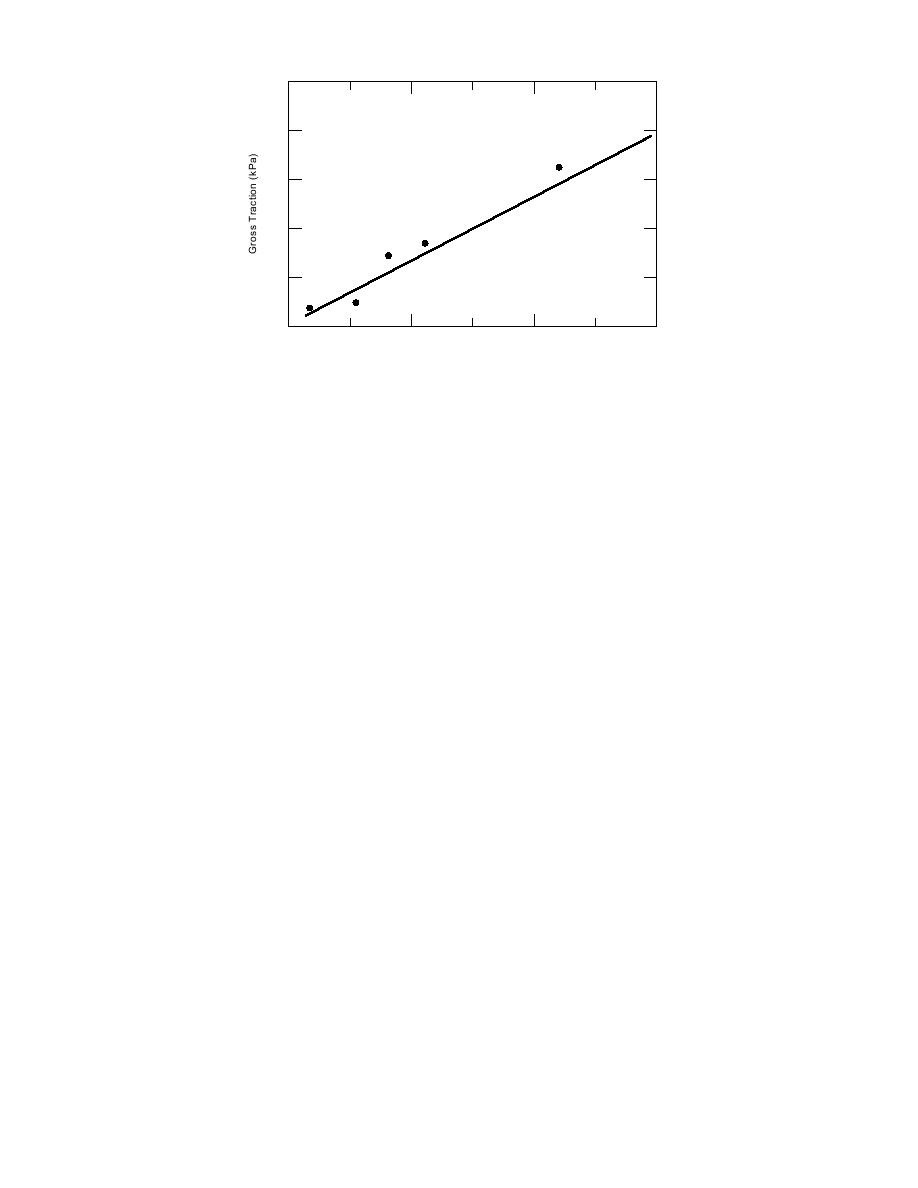
100
80
HEMTT
60
40
HMMWV
M60
20
SUSV
Bradley
0
0
100
200
300
Normal Stress (kPa)
Figure 8. Vehicle traction for packed snow. (From Richmond et al.
1990.)
of the wheel radius and where sinkage is greater
We assume that disturbed, packed or processed
snow attains a density of at least 0.55 Mg/m3.
than the ground clearance for wheeled or tracked
vehicles. This added set of criteria for defining a
Since only vehicles that have a very high ground
deep snow condition recognizes that when a ve-
pressure are expected to cause any sinkage on
hicle sinks to the point where the majority of its
these surfaces, Rterrain for this case becomes zero
running gear is below the snow surface, added
for all vehicles.
sources of resistance arise beyond simple com-
The equation we use to predict traction on
paction of the snow in front of the tire or track.
packed snow is
Both traction and resistance are different for
Tgrossi = 0.321Ni0.97Ai
deep snow than for shallow snow. However,
(12)
there are few published results for deep snow
mobility with wheeled and tracked vehicles,
and is shown in Figure 8.
making it difficult to write accurate prediction
A comparison of measured and predicted trac-
equations. Thus, we used the shallow snow re-
tion on shallow, groomed snow is discussed in
sults as a starting point for the deep snow mod-
Appendix C.
els. We began by assuming that the deep snow
For disturbed snow deeper than 1 cm over an
condition only alters traction to a small degree,
ice surface, we assume that a bond has developed
since the majority of the tractive force is gener-
between the packed snow and ice; we use eq 12
ated in the fully compacted portion of the pres-
for traction in this case and again assume that the
sure bulb. The tractive force developed in deep
Rsnow is zero.
snow is most likely somewhat less than for shal-
low snow, because the pressure bulb will have a
slightly lower density. The degree of reduction in
DEEP SNOW
density and tractive force is unknown, so we
chose to use the shallow snow traction expression
Deep snow occurs when the deformation bulb
(eq 2) for deep snow.
under a wheel or track does not extend down
Motion resistance generated as the result of
through the snowpack to an underlying surface
sinkage into the snow exists in deep snow just as
(Fig. 1). Since vehicle sinkage depends on ground
it did for shallow snow. In the vast majority of
pressure, it is apparent that the presence of a deep
cases, sinkage is greater in deep snow, so resis-
snow condition is a function of the snow depth,
tance is higher, since a greater portion of the wheel
bearing capacity (generally reported in the form
or track is involved in compacting and displacing
of a pressuresinkage relationship) and vehicle
snow. However, several additional sources of re sis-
characteristics. Additionally we include as deep
tance may arise in deep snow. For example, por-
snow the cases where sinkage is greater than 2/3
7



 Previous Page
Previous Page
